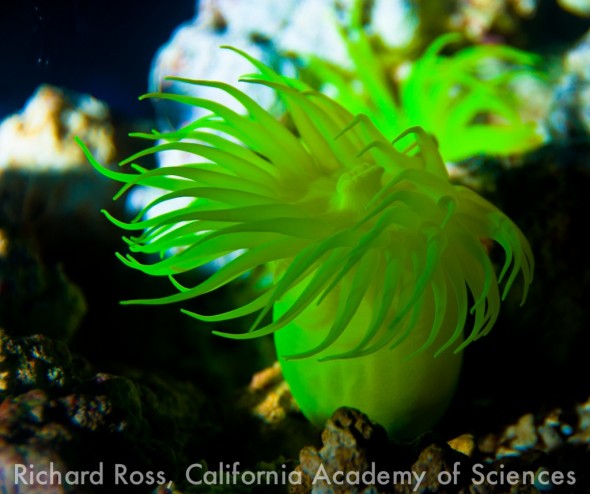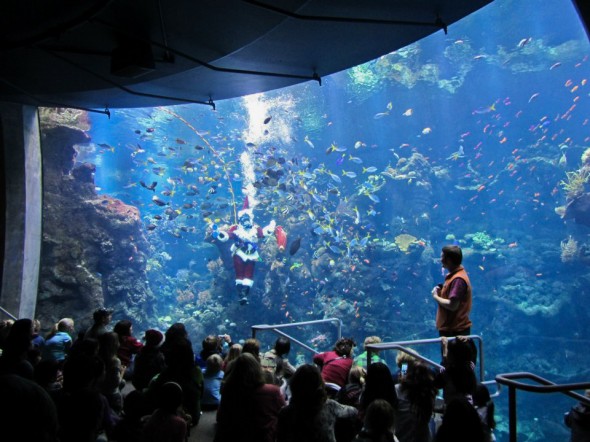Animal Movers – from Birch to CAS
From Animal Movers
http://vimeo.com/45345343
Animal movers moved coral from Birch to CAS. You get to see me in a wet suit.
From Animal Movers
http://vimeo.com/45345343
Animal movers moved coral from Birch to CAS. You get to see me in a wet suit.
http://vimeo.com/36865036
This video from the 2011 Philippine Biodiversity Expedition give you a good idea why the Verde Island Passage has been called ‘the center of the center of marine biodiversity’.
Researchers from the California Academy of Sciences have been visiting the Verde Island Passage area off the coast of Batangas Province on Luzon Island, Philippines for almost 20 years. Research by scientists during this period has suggested that this area may be the “center of the center” of marine biodiversity, and perhaps home to more documented species than any other marine habitat on Earth; there can be more species of soft corals at just one dive site than in all of the Caribbean.
Funded by a generous gift from Margaret and Will Hearst, the 2011 expedition was not only the most comprehensive scientific survey effort ever conducted in the Philippines, but also the largest expedition in the history of the California Academy of Sciences. Over eighty scientists from the Academy, the University of the Philippines, De La Salle University, the Philippines National Museum, and the Philippines Bureau of Fisheries and Aquatic Resources came with a mission to survey and document various aspects of the various ecosystems in the area. A further team of Academy educators attended with a mission to share the expedition’s findings with local community and conservation groups as the Expedition was happening. As part of the expedition’s shallow water team based at the renowned Club Ocellaris, Bart Shepherd, Matt Wandell and I focused upon the underwater sites that served as the inspiration for the Steinhart Aquarium in the California Academy of Sciences 212,000 gallon Philippine Coral Reef exhibit.
In part one of this series, we covered getting the the Philippines, the realities of being on an expedition and our lucky observation of hard coral spawning. In part two we’ll look at how we collected octopus and corals, how we shipped those animals back home, and more.

Last December when Koji Wada of the renowned Blue Harbor visited the Steinhart Aquarium he was kind enough to bring us two stunning Halcuriascarlgreni anemones. From Japans deeper, cooler waters, these anemones are jaw droppingly bright and colorful. Currently, they are being kept at 66 degrees in our Nautilus exhibit and both animals seem to be getting along just fine with each other. The Halcurias are being fed thawed frozen mysis via ‘Julians Thing’ every other day, and we hope they will be so happy and full of food that we will have more of them in the near future.
From various
Children watch as aquarium biologist Rich Ross, dressed as Scuba Santa Claus, swims away after hand feeding fish mysis shrimp and fish food at the 212,000 gallon Philippine coral reef at the California Academy of Sciences’ Steinhart Aquarium in San Francisco.


From Advanced Aquarist
On 2011 Philippine Biodiversity Expedition, biologists from the Steinhart Aquarium in the California Academy of Sciences collected two species of Ghost pipefish, the Ornate Ghost Pipefish (Solenostomus paradoxus) and the Robust Ghostpipefish (Solenostomus cyanopterus). In June 2011 we reportedon the spawning and rearing attempts of the Ornate Ghostpipefish and were proud to get the larvae to day 7, after which we unfortunately lost the female due to the end of these fishes short lifespan. However, we did have a female Robust Ghost pipefish and decided to display her in the same tank as the male Ornate Ghost Pipefish, and though we thought spawning between the two was possible we were surprised that courtship began on the very first day of co-habitation. It is unknown if these fish hybridize in the wild, and we are excited to present video of the first documentation of the hybridization.
We watched excitedly as the eggs that were held in the females fins began to develop eyes, and were even more excited to hatch the eggs and get the hybrid larvae to day 22 using different methodology than was used on the Ornate Ghostpipefish larvae. Currently, the female Robust is carrying more eggs fertilized by the male Ornate Ghost Pipefish, and Steinhart Staff is looking forward to another oppurtunity to raise another batch of hybrid larvae.
http://vimeo.com/30021499
Contact Rich by clicking here
Copyright 2023, Richard Ross